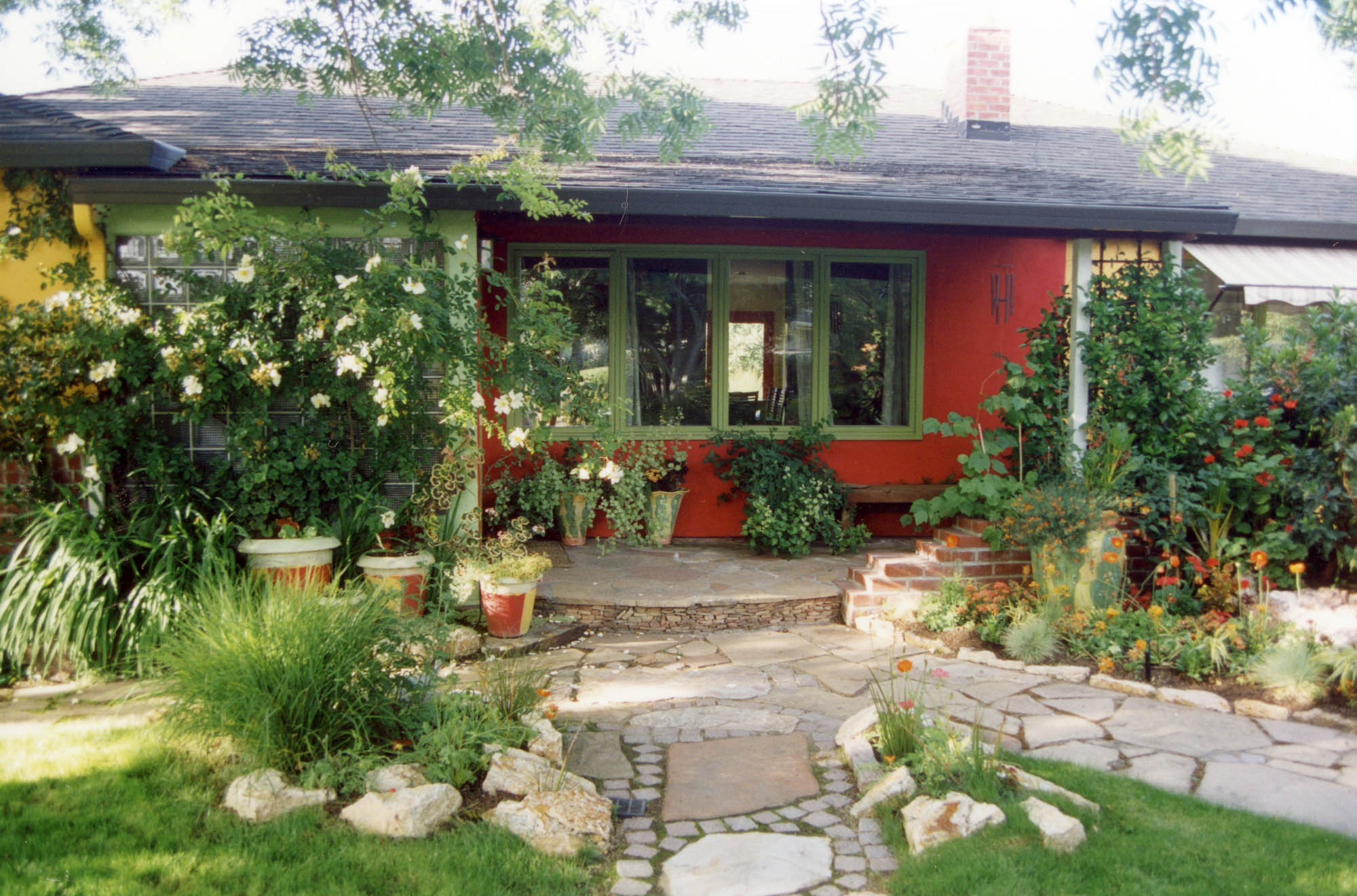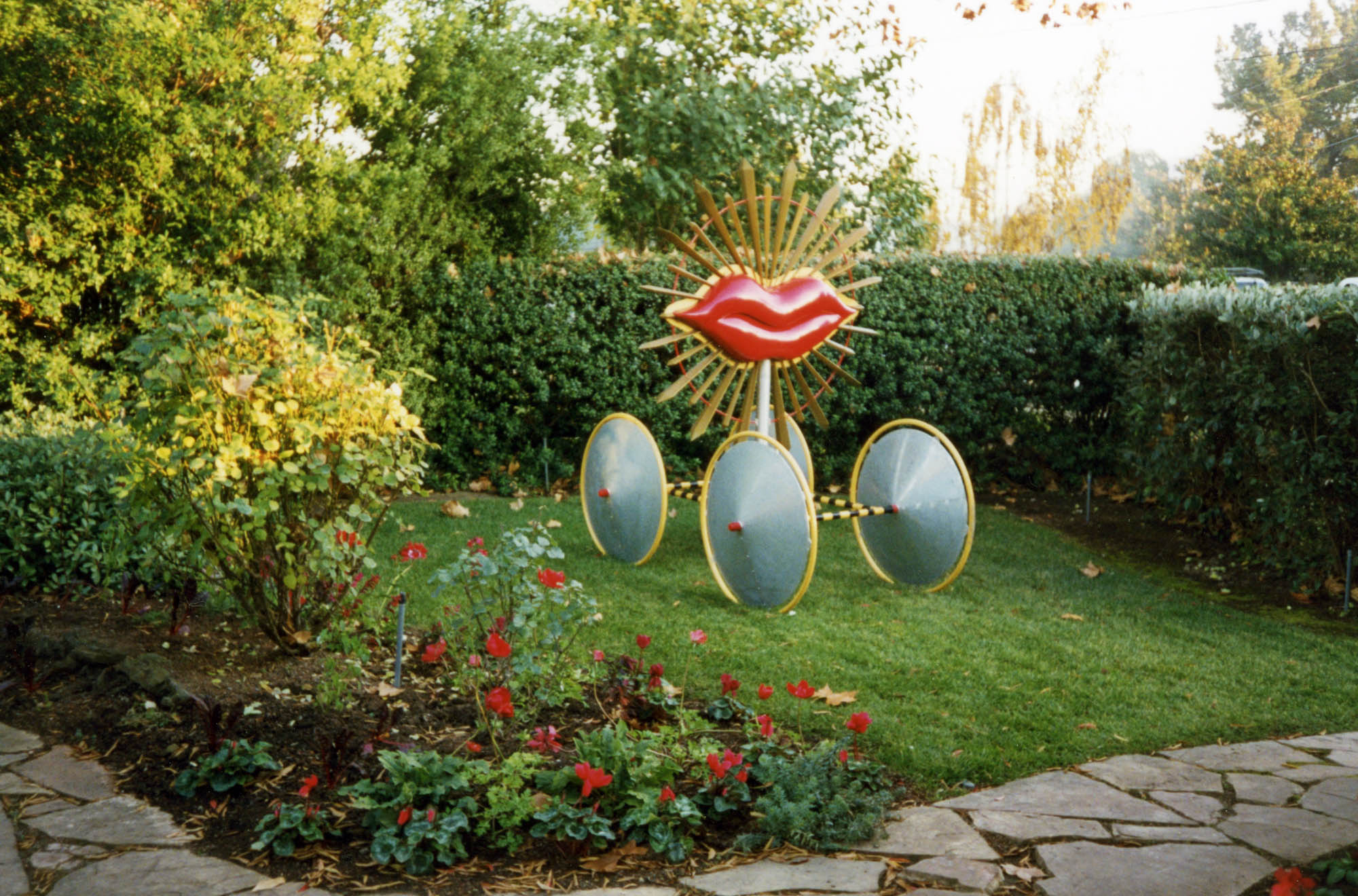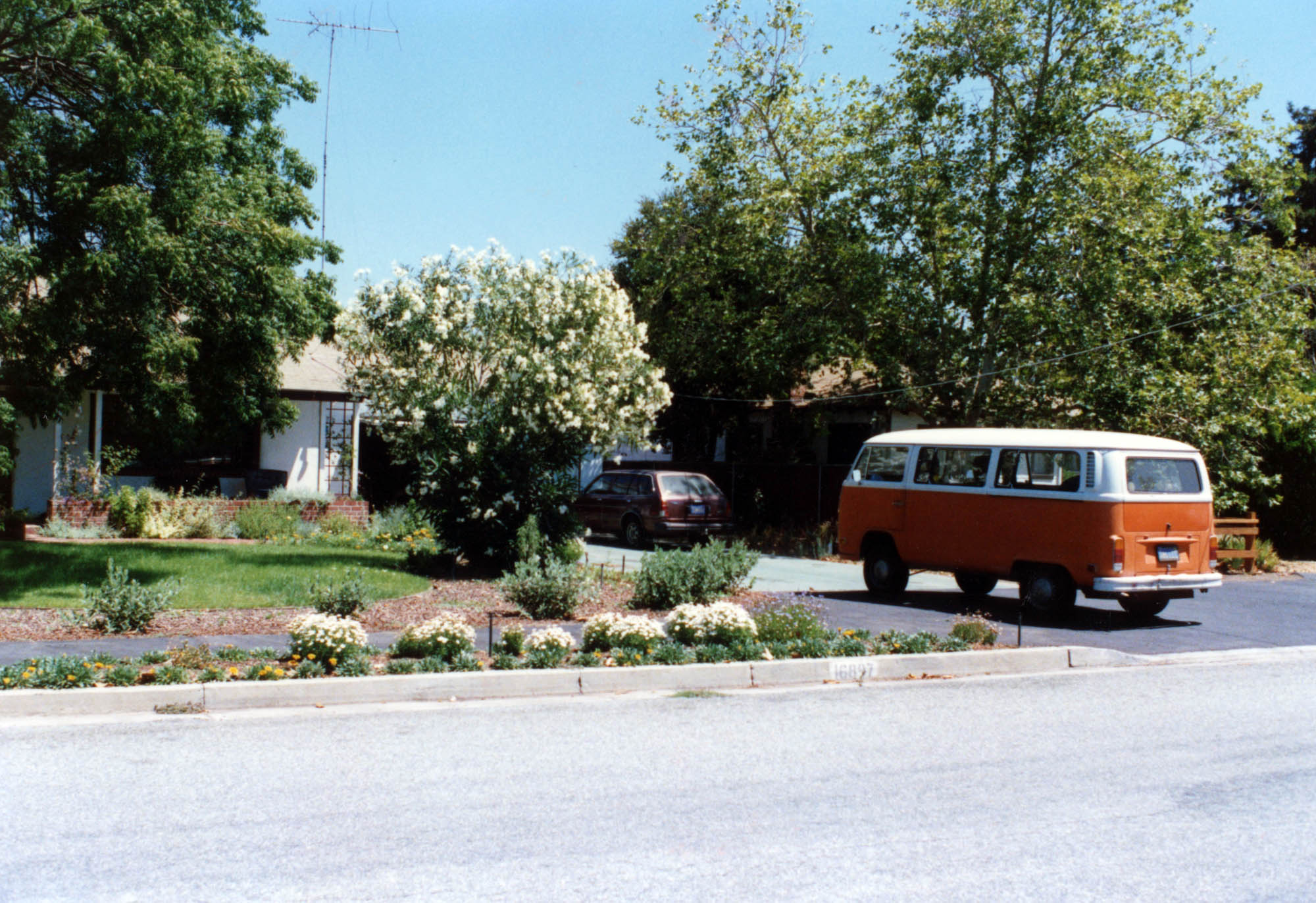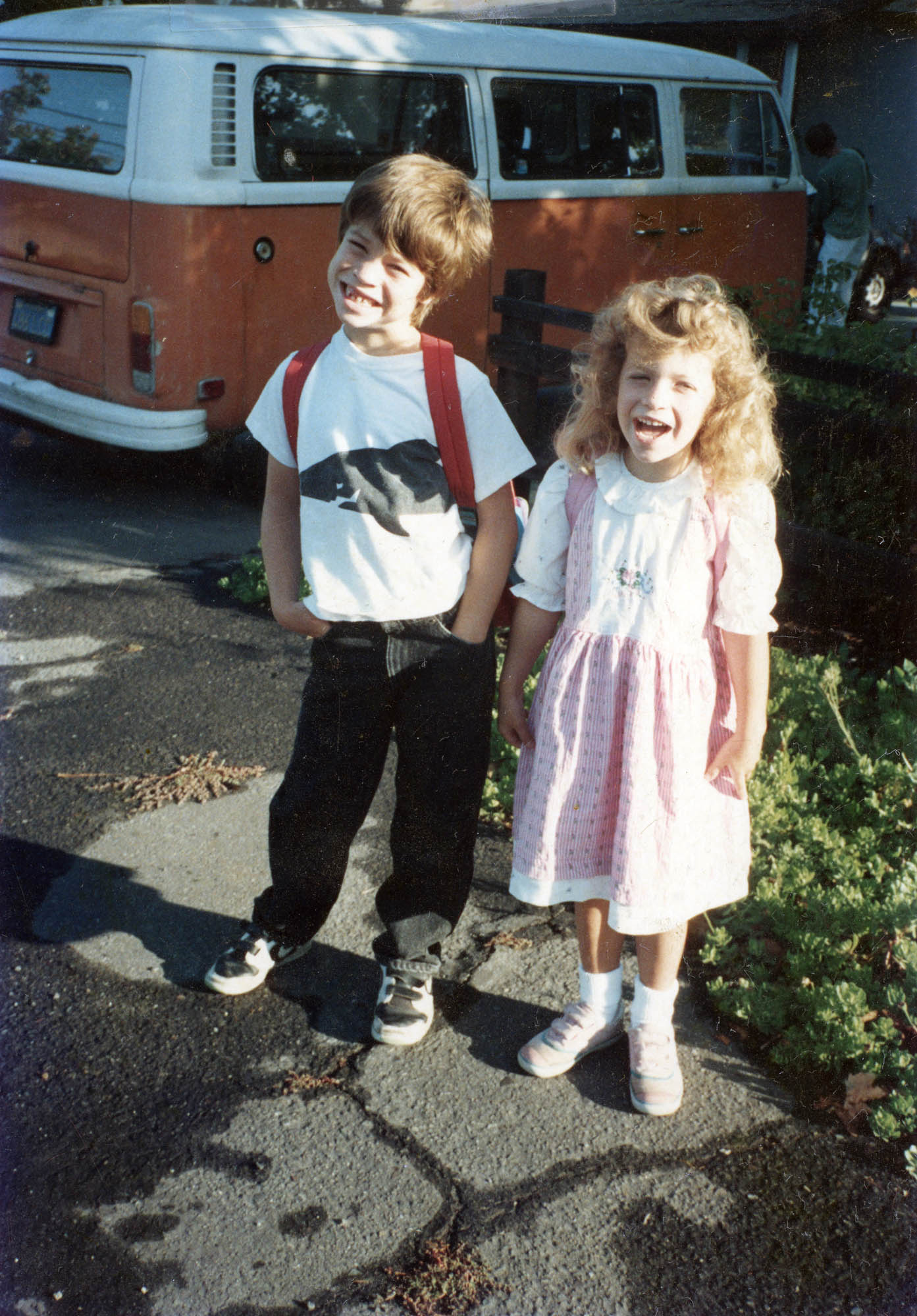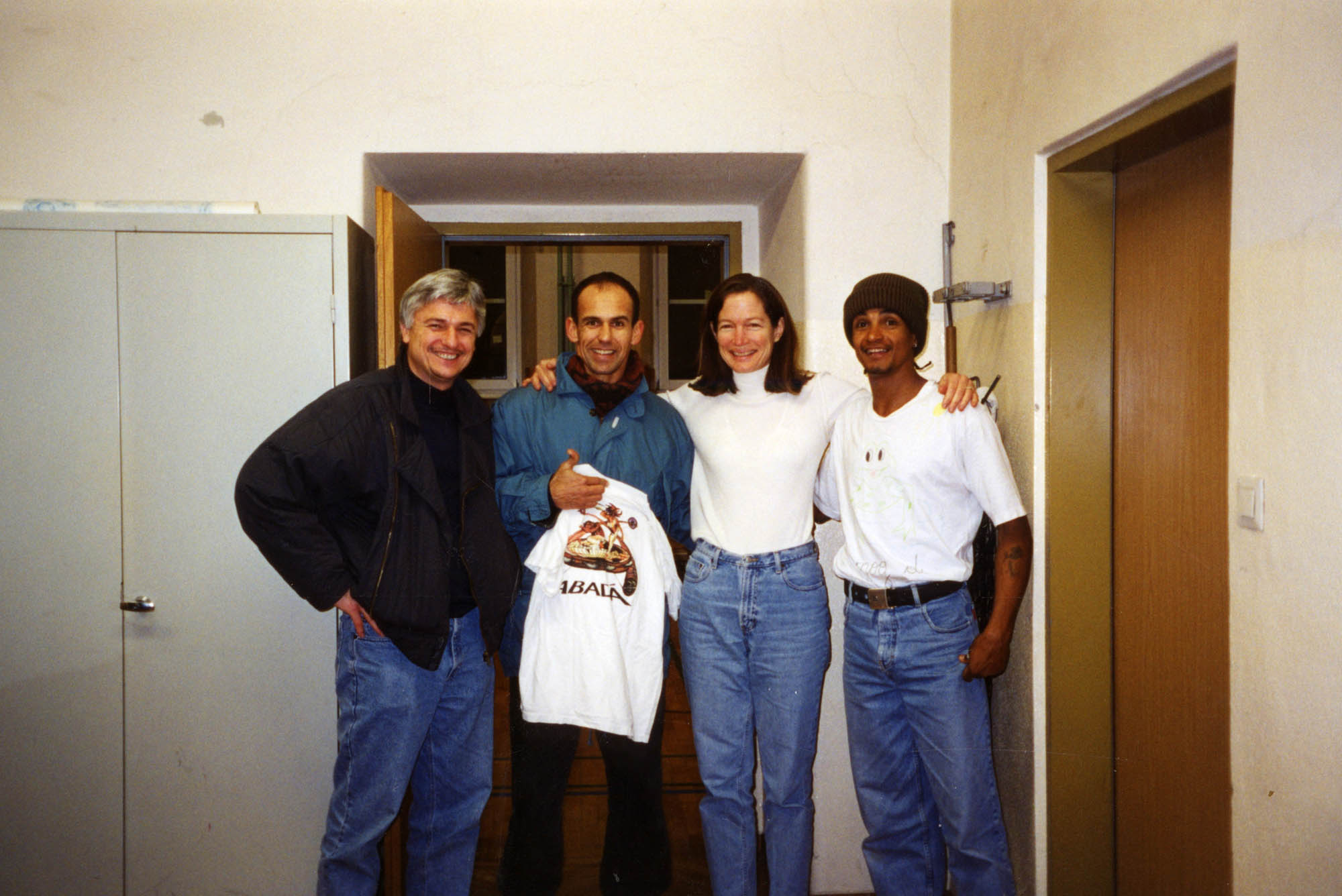A Dream Comes True
In 1986, Silicon Valley was thriving. A couple of years earlier, Apple introduced the Macintosh and Hewlett-Packard introduced the first ink-jet printer; Steve Jobs and Steve Wozniak just left Apple; the Arpanet was renamed Internet; and Larry Harvey started the first Burning Man on Baker Beach in San Francisco. The valley stretched from San Mateo and the newly built Oracle towers in the North to San Jose in the South.
We moved to Los Gatos, a small town in the South Bay, in the foothills of the Santa Cruz mountains. We moved there, because Los Gatos is a walkable town, not just endless suburbia. It reminded us of European communities. We wanted our kids to grow up in a small community, where they can walk and bike to school, and where they can play outdoors in a big garden with lots of fruit trees, flowers and grass.
We bought a beautiful ranch house with a huge garden, that served us well for the 20 years we spent in Silicon Valley. After a couple of adaptations, we had enough space to host an Au Pair to help us with the kids while they were still small.
My career goal was to one day become the Chief Technology Officer of an A-level company: a company, that is backed by the best venture capitalists on Sand Hill road; a company, that is founded by an experienced A-level team; a company, that has the potential of becoming a unicorn with a market value of more than $1B. In those days that meant that you had to learn your chops at a bigger company, and then move to the start-up scene. I went to work at Hewlett-Packard to start realizing my dream.
Big Companies
Hewlett-Packard hired me as a technical leader, with technical responsibility for the development of a distributed data base product. After about a year, I was promoted to engineering manager. While I was a very good engineer, I was not a world-class engineer, and being an engineering manager allowed me to thrive, as I have always been a good communicator, enjoyed the management side of the job, and did not have to ‘compete’ on the engineering side – as I saw my value-add to enable engineers to excel. I am grateful for the excellent training that Hewlett-Packard provided to first time managers like myself. And I am still proud about delivering my first successful product to the market: Hewlett Packard’s distributed database product.
After I shipped my first commercial product, I got the opportunity to work at another large company: Digital Equipment Corporation (DEC). A friend of mine started a new research and development lab for DEC in Mountain View, and hired me to explore various types of workflow services and products, geared towards the office automation space.
After quite a bit of research, I was given the chance to develop a workflow product, consolidating the work of multiple engineering groups within the lab. I was promoted to director of engineering and successfully shipped an internal product. I enjoyed the opportunity of managing engineering managers as opposed to engineers. DEC missed the personal computer revolution and it was clear that the company would go through difficult times. And I was ready to join the start-up scene.
A friend of mine worked at NeXT, the start-up that Steve Jobs founded, after he was fired from Apple. He told me that Steve was looking for a senior engineering manager. I applied for the job.
Start-Ups
After an intense interviewing process, my last interview was with Steve. We met for breakfast at Il Fornaio in Palo Alto. We talked for two hours. He had a super large orange juice, green tea and granola with fruit, while I had a couple of eggs, a small orange juice and a latte. At the end of our breakfast, he made me an offer, which I gladly accepted.
Initially Steve hired me as the director of engineering for a project called Enterprise Objects Framework, which was the database / transaction layer within the OpenStep operating system. Once we successfully delivered the first version of that framework, I was promoted to lead the development of the whole operating system.
After four years at NeXT, I decided to leave to become the VP of Engineering at DataMind, a B-Level start-up. Half a year after I left NeXT, Steve sold the company to Apple for $400M and OpenStep became System X, the main operating system of Apple. iOS, the operating system, that Apple developed to support iPhones and iPads is based on the same code base.
In the nineties, you had to prove yourself, before you got a chance to lead an A-Level company. DataMind turned out to be the right stepping stone for me. It was one of the first companies that successfully shipped an artificial intelligence product, that predicted buyers’ behavior to sell them more products. DataMind was sold for $400M to ePiphany a year after I left.
During my short stint at DataMind, I was recruited as the VP of Engineering to Ariba, an A-level start-up, that was founded half a year before I joined. Ariba was my big break in the Valley, and it was my master piece. Ariba was a business-to-business e-commerce company, that automated procurement for global 2000 companies, utilizing the power of the Internet. I was able to leverage my management know-how, my experience with high performance teams, and my PhD thesis which was all about distributed systems.
Ariba was one of the fastest growing companies ever. We scaled from zero revenue to a run-rate of a billion dollars within four years. I grew my engineering team from 7 engineers to over 700 engineers. We took the company public in 1999. It was a hugely successful Initial Public Offering. I sold the majority of my shares before the crash of 2001. When the new CEO lied to me, I decided to leave, as I could not possibly work with low integrity people anymore. That was in late 2001. I was 45 years old and I quit as the Chief Technology Officer of an A-level company. Ariba was bought by SAP in 2012 for $4.4B.
Silicon Valley Lifestyle
I would not want to miss the 15 years of our Silicon Valley intensive, having been at the fore-front of major innovation waves, and changing whole industries on the way. I enjoyed the opportunity to contribute to very different products and platforms: from distributed databases to workflow infrastructure, from operating systems to artificial intelligence products, from transaction infrastructure to building the biggest Internet application at the time. I enjoyed diving into all of these various technologies, learning them and then leading teams and organizations to use them to implement innovative and novel solutions.
One of the reasons for my success as a technology executive was, that I always cared about all of our stakeholders, not just our shareholders. And I deeply cared about my engineering organizations and engineers, respecting and acknowledging their contributions more than my own. I am very grateful for the many opportunities that came my way, for being at the right place at the right time.
Los Gatos was a good choice for our kids to grow up, as they could get to all the places they needed to by walking and biking. We had to adapt to make it all work, particularly at the beginning of our Valley adventures. Having au pairs live with us, was the only way for both Lisa and I to continue our careers, as neither of our parents were living close by. During the summer months, we sent our kids to my sister in Innsbruck with the idea that they not only learned and practiced German but also immersed themselves into a different culture. And this worked both ways: we took a couple of my sister’s kids every other summer to hang out with us.
We bought an old VW ‘hippie’ bus, that we took on the road a lot to explore the beautiful state of California. We just threw all of our gear into the bus and went camping during the summer months and skiing during the winter months. We loved to come down to Big Sur to explore the magnificent Pacific Coast. Lisa and I fell in love with the rugged terrain and the unparalleled beauty of this area and now live in Big Sur.
Working for Hewlett Packard provided me with a great opportunity to be home at 6 pm almost every day and to spend time with the kids, before I finished some of my work in the evening. At Ariba, work life was very intense. I took off one week per quarter and one week-end per month, the rest was work. We all talked about this level of commitment before I took the job, and the family supported my schedule. Even during that time, I was able to jump on my mountain bike and go up the Los Gatos hills for half an hour here and there, enough to get some exercise and to free my brain to download important information.
Throughout these years, I was able to deepen my love for music, as I learned how to play Jazz piano. A friend of mine encouraged me, and I got good enough to play in his trio / quartet. We had a lot of fun playing for ourselves and friends.
When the kids became teenagers, we wanted to find a sport that we could all do together. Brazilian friends of ours introduced us to Capoeira, an Afro-Brazilian martial art form that combines elements of dance, acrobatics and music. We all got into it and enjoyed our workouts in Los Gatos and Santa Cruz, building new friendships with the Brazilian community on the way.
Since I did not really plan on leaving Ariba in 2001, it took me a few months to ‘wind down’, and I was smart enough not to accept any new positions to do what other people wanted me to do, but to hunker down to explore what I and Lisa & I together wanted to do.

